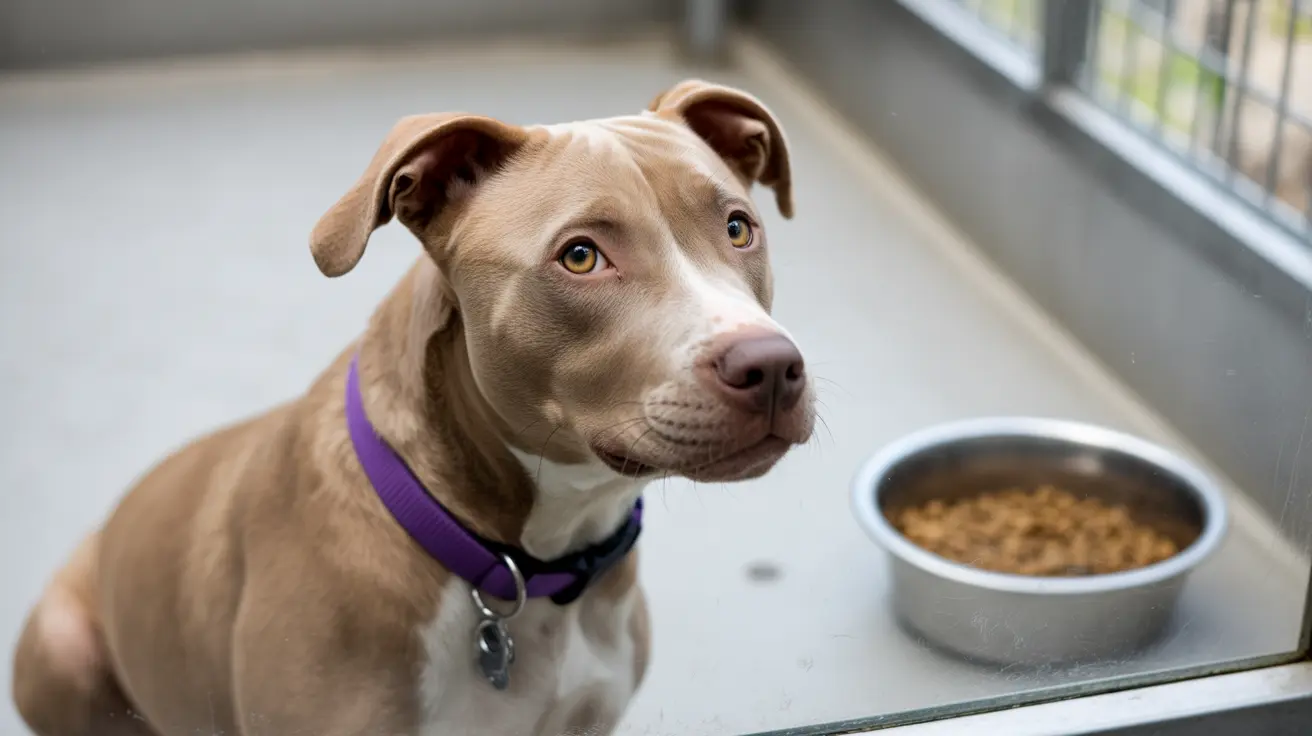Understanding the Causes of Swollen Eyelids in Dogs
If you've noticed your dog's eyelids looking puffy or inflamed, it's natural to worry. Swollen eyelids—medically known as blepharitis—can make your dog uncomfortable and may signal an underlying health issue. Let's explore what leads to this condition and how you can help your canine companion feel better.
What Is Blepharitis?
Blepharitis is simply the inflammation of a dog's eyelids and the surrounding tissues. It can affect one or both eyes and often brings symptoms like redness, swelling, discomfort, and sometimes even changes in behavior—your dog might rub their face more or seem less active. You'll likely notice excessive blinking (blepharospasms), squinting, discharge that ranges from clear to pus-like, flaky skin around the eyes, hair loss on the eyelid, or increased sensitivity to light. These signs point to irritation that shouldn't be ignored.
Main Causes of Swollen Eyelids in Dogs
Several factors can trigger blepharitis and eyelid swelling. Some are more common than others:
- Allergies: Dogs can react to foods, inhaled substances (like pollen or dust), medications, environmental factors (mold), or insect bites. Both food and environmental allergies are frequent culprits.
- Infections: Bacterial infections (such as Staphylococcus or Streptococcus), viruses, or fungi can all cause inflammation. Conditions like conjunctivitis often lead to swelling and discharge.
- Congenital Abnormalities: Some breeds are born with issues like entropion (inward-rolling eyelids), ectropion (outward-rolling eyelids), distichiasis (extra eyelashes growing inward), or ectopic cilia. These anatomical quirks irritate the eye and promote inflammation.
- Tumors: Growths—benign or malignant—especially those arising from meibomian glands (sebaceous adenomas or carcinomas) can cause localized swelling.
- Trauma or Injury: Scratches from play, bites from other animals, foreign objects stuck in the eye area, or blunt injuries may all result in swelling and pain.
- Parasites: Mites such as Demodex or Sarcoptes (which cause mange) sometimes contribute to blepharitis.
- Autoimmune/Systemic Diseases: Conditions like hypothyroidism, Cushing's disease, diabetes mellitus, and various autoimmune disorders may manifest as eyelid inflammation.
- Chemical/Environmental Irritants: Exposure to dust, smoke, cleaning agents around the house, or grooming products can all trigger irritation leading to swelling.
Which Dogs Are Most at Risk?
Certain breeds are more prone due to their facial structure or genetic predisposition. Breeds like Chinese Shar-Pei, Chow Chow, Shih Tzu, Pekingese, English Bulldog, Pug, Poodle, Lhasa Apso—and even Golden Retrievers and German Shepherds—may develop these issues more frequently than others.
How Vets Diagnose Swollen Eyelids
If you bring your dog to the vet for swollen eyelids, expect a thorough checkup. Diagnosis usually includes:
- A careful visual examination of the eyes and surrounding tissues
- The Schirmer tear test (to check tear production)
- Fluorescein staining (to look for corneal ulcers)
- Taking samples from any discharge for lab analysis
- Measuring intraocular pressure if glaucoma is suspected
- Bood tests for systemic diseases
- A biopsy if a tumor is present
This approach helps pinpoint whether infection, allergy, trauma—or something else—is at fault.
Treatment Options for Blepharitis & Eyelid Swelling
The best treatment depends on what's causing the problem. Common management strategies include:
- Medications: Topical/systemic antibiotics for bacterial infections; antifungals for fungal causes; antiparasitics for mite infestations; anti-inflammatories/antihistamines for allergy-driven cases.
- Surgery: Sometimes needed for correcting congenital abnormalities or removing tumors.
- Supportive Care: Warm compresses soothe discomfort; regular cleaning removes debris; Elizabethan collars prevent further self-trauma from scratching/rubbing.
- Lifestyle Adjustments: Minimizing exposure to allergens; dietary changes if food allergies are identified; keeping living spaces clean helps reduce irritant exposure.
- Treating Underlying Diseases: Systemic conditions like hypothyroidism may require specific medications such as corticosteroids or immunosuppressives.
The prognosis is generally good once you identify and treat the underlying cause. Infectious cases usually resolve quickly with proper therapy; allergy- and autoimmune-related forms may need ongoing management but can still be controlled well with attention and care. Tumor- or defect-related cases often improve after surgery.
When Should You Worry?
If you see severe swelling; persistent redness; thick yellow/green discharge; changes in eye color; cloudiness; excessive tearing; squinting; visible injury/bleeding—or sudden behavioral changes like lethargy—it’s time for immediate veterinary attention. These signs could indicate a serious problem that requires prompt intervention to prevent complications such as scarring or vision loss.
Prevention Tips
- Schedule regular veterinary checkups
- Treat early signs of eye irritation before they worsen
- Pursue effective parasite control year-round
- Avoid known allergens whenever possible
- Pursue safe grooming practices—be cautious with products near your dog's eyes!
No vaccine exists against blepharitis yet—but with proactive care and quick responses when problems arise—you can help keep your dog's eyes healthy and comfortable throughout their life.





